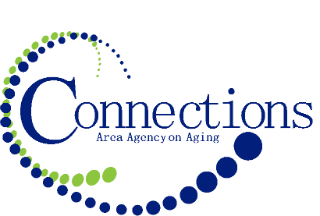Policy: Connections AAA will determine priority and maintain a Wait List for services as required in accordance with the reporting manual issued by the Iowa Department on Aging.
Procedures:
1. Before a Wait List is started, a service utilization review must be conducted to justify creation of such a list to document that current usage is at its maximum level.
2. Iowa Department on Aging must be notified a minimum of 15 business days prior to start of the Wait List.
3. CAAA determines the priority of the Wait List as following for HCBS:
a. Priority 1: The consumer is in immediate danger without services
b. Priority 2: The consumer’s risk is real and/or foreseeable in the immediate future without services
c. Priority 3: The consumer has potential for risk without services
d. After priority level is set, service order is based upon a first come, first serve basis. Exceptions to this order may be made when considering the overall at-risk status of an individual with Director approval.
4. CAAA determines the priority of the Wait List as follows for HDM:
a. Priority 1: Nutrition Risk score of 6 or higher
b. Priority 2: Individuals who present as food insecure
c. Priority 3: Location of where service is needed (We have two major Meals on Wheels programs and if someone in Sioux City stops receiving meals and an opening ensues, we will fill the slot with the next person in the priority hierarchy in that area)
d. After priority level is set, service order is based upon a first come, first serve basis. Exceptions to this order may be made when considering the overall at-risk status of an individual with Director approval.
e. All wait-listed individuals regardless of risk score or priority level will be given the opportunity to have a nutrition counseling session and will receive information about SNAP Education and local Food Bank locations
5. CAAA determines the priority of the Wait List as follows for Iowa Café Congregate meals:
a. Priority 1: Nutrition Risk score of 6 or higher
b. Priority 2: Individuals who present as food insecure
c. After priority level is set, service order is based upon a first come, first serve basis. Exceptions to this order may be made when considering the overall at-risk status of an individual with Director approval.
d. All wait-listed individuals regardless of risk score or priority level will be given the opportunity to have a nutrition counseling session and will receive information about SNAP Education and local Food Bank locations
6. Wait List individuals shall be moved to Unmet Needs if service cannot be implemented within six (6) months.
7. Members of the CAAA management team or designee will manage and monitor weekly the Wait List via submitted requests for assistance.
8. Wait List information will be entered into WellSky and reported via rosters in procedure with data management practices/instructions provided.
9. Consumers will be notified in writing that they are on a Wait List if they choose this as an option. Notification shall include:
a. Consumer should report changes that may impact their priority score
b. Consumer may request to be removed at any time
c. Notify Connections if their contact information changes to be sure they can be contacted when a spot opens (they can and will be removed if unable to contact)
d. Consumer may have access to service on a fee-for-service basis until their name reaches the top of the wait list if they choose
10. Individuals will be removed from the Wait List in accordance with approved IDA Manual reasons, such as service has become available, consumer requests removal, or consumer cannot be contacted.
11. Exemptions:
a. Elder Abuse Consumers: Individuals eligible for the Elder Abuse Prevention and Awareness program cannot be placed on a wait list for EAPA services. They may be placed on the Wait List for HCBS, but not that of Elder Abuse Intervention or Consultation.
b. IRTC Consumers: Transition consumers often present in a state of temporary and urgent need to remain at home and will not be placed on a wait list for critical in-home services.
c. Iowa Café Consumers who attend cafes in counties where there is no traditional congregate meal site











